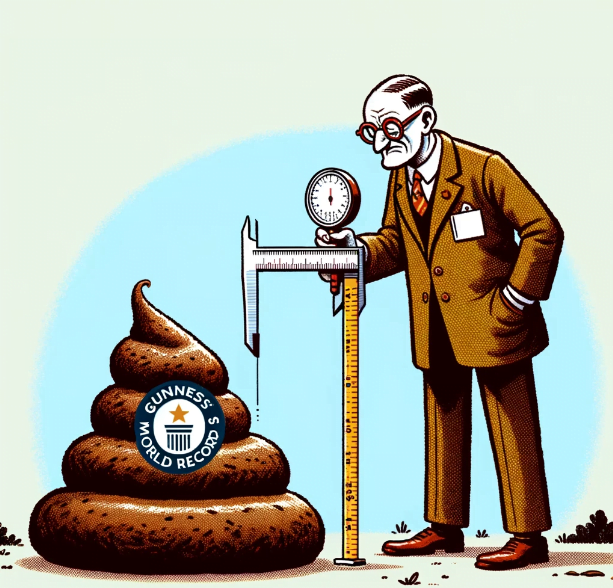
Bug Crap: Fascinating Facts About Insect Excrement
When we think of insects, we often focus on their roles as pollinators, pests, or food sources for other animals. However, insect poop, or frass, plays an essential role in the ecosystem. In this blog post, we’ll dive into the intriguing world of insect excrement, uncovering its significance, uses, and surprising facts.
The Importance of Insect Poop
Insect poop, also known as frass, is more than just waste. It plays a crucial role in nutrient cycling and soil health. Insects consume a variety of organic materials, from leaves and wood to other insects. Their poop helps return nutrients to the soil, enriching it and promoting plant growth. Additionally, the burrowing and pooping activities of insects like beetles and ants help aerate the soil, improving soil structure and making it easier for roots to grow and for water and air to penetrate the soil. Insect poop also serves as a food source for a range of microorganisms, fungi, and other insects, contributing to the intricate food web within the soil ecosystem.
Interesting Facts About Insect Poop
Insect excrement is as diverse as the insects themselves. Here are some fascinating facts about the poop of different insect species:
1. Caterpillar Frass
- Caterpillar poop is surprisingly rich in nutrients and is often used as a natural fertilizer by gardeners. It can also act as a deterrent to other herbivores, as some caterpillars produce frass with chemical compounds that signal plant defenses.
2. Termite Poop
- Termites are known for their ability to break down cellulose in wood. Their poop, which is a mix of digested wood particles, is used to build and reinforce their nests. Some termites even construct elaborate structures, such as mounds and tunnels, using their frass.
3. Aphid Honeydew
- Aphids excrete a sugary substance called honeydew, which is a favorite food of ants and other insects. Ants often “farm” aphids, protecting them from predators in exchange for a steady supply of honeydew. This mutualistic relationship benefits both parties.
4. Dung Beetle Balls
- Dung beetles are famous for their behavior of rolling dung into balls and burying them. These balls serve as food storage or breeding chambers. By burying dung, dung beetles help control parasites and recycle nutrients back into the soil.
5. Cockroach Frass
- Cockroach poop, known as frass, is a significant allergen and can trigger asthma in sensitive individuals. It is important to manage cockroach populations to minimize exposure to their frass in homes.
6. Ant Poop
- Ants are incredibly clean creatures and often designate specific areas in their nests as “bathrooms” to keep their living spaces tidy. These waste areas, called “middens,” also serve as compost heaps that decompose organic material.
7. Honeybee Frass
- Honeybees typically do not poop inside their hives. Instead, they take cleansing flights to defecate outside, maintaining a clean environment inside the hive. Bee poop can sometimes be seen as yellow streaks on surfaces near hives.
8. Grasshopper Frass
- Grasshopper poop is often found in small, pellet-like droppings. This frass can sometimes be used by other insects and small animals as a source of nutrition.
9. Silkworm Frass
- Silkworms produce large amounts of frass as they consume mulberry leaves. In some cultures, silkworm frass is collected and used as a natural fertilizer, believed to improve soil health and plant growth.
10. Fly Poop
- Flies are known for their rapid digestive processes and produce tiny black or brown specks of poop frequently. Fly frass can be found in areas where flies are active, and while it can be a nuisance, it is a part of their biological cycle.
11. Cicada Poop
- Cicadas produce a liquid waste known as “honeydew,” which can sometimes rain down from trees during heavy infestations. This honeydew can be a sticky nuisance but also serves as a food source for other insects.
12. Beetle Frass
- Many beetles, especially wood-boring beetles, produce frass that looks like sawdust. This frass is often a telltale sign of their presence in wooden structures and can be a concern for homeowners.
13. Praying Mantis Poop
- Praying mantises produce small, pellet-like droppings that are often found near their feeding sites. Their frass can help gardeners identify their presence and the benefits they bring by controlling pest populations.
14. Cricket Poop
- Cricket frass is small and pellet-like, similar to grasshopper poop. It can be found near their habitats and can indicate a healthy population of crickets, which are important for the food chain.
15. Spider Poop
- Spiders produce liquid poop that can sometimes be seen as small white or black spots on surfaces where they live. While not technically insects, spiders play a crucial role in controlling insect populations.
Insect poop may not be the most glamorous topic, but it plays a vital role in maintaining healthy ecosystems. From nutrient recycling and soil aeration to serving as food for other organisms, insect excrement is an essential component of the natural world. By understanding the significance of insect poop, we can better appreciate the complex interactions that sustain our environment.
Next time you see an insect, remember that even their poop contributes to the delicate balance of nature. Whether it’s caterpillar frass enriching the soil or dung beetles rolling their dung balls, insect poop is a fascinating and important part of the ecosystem.



